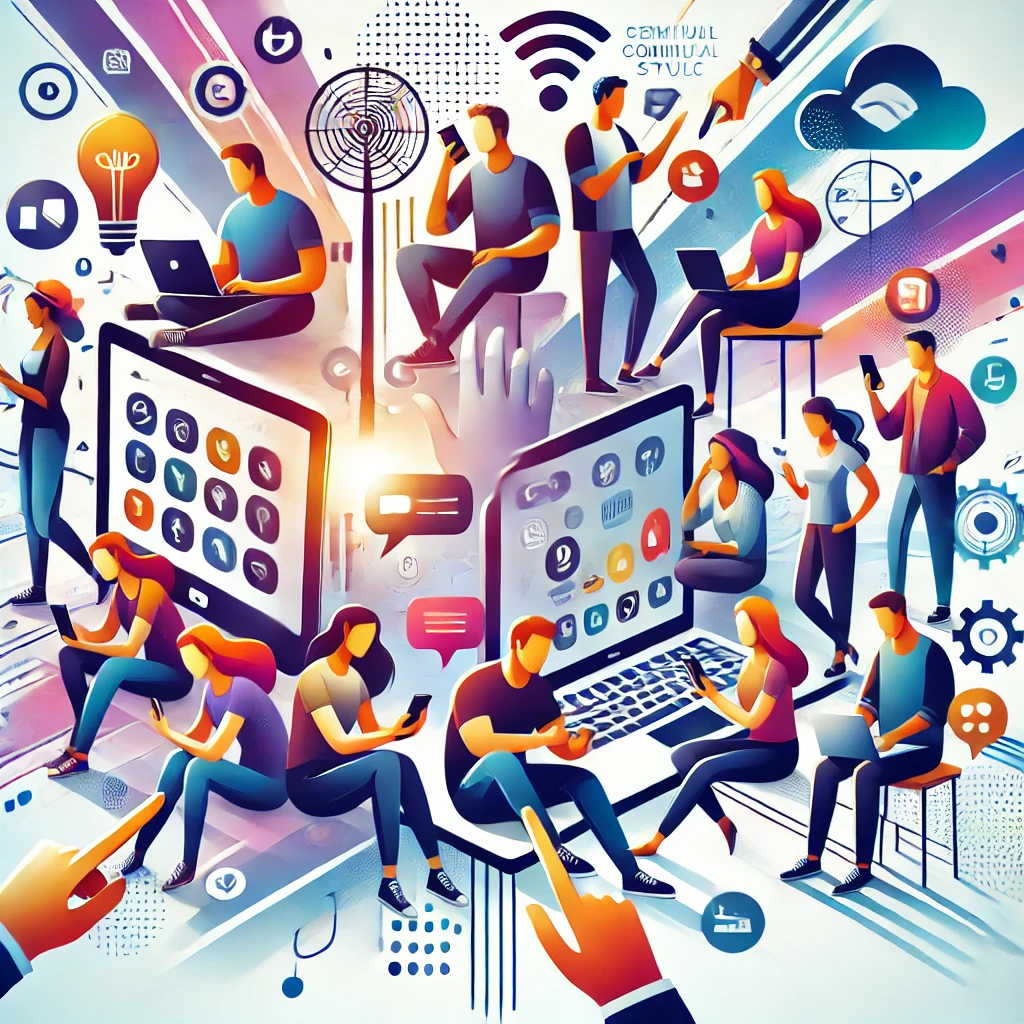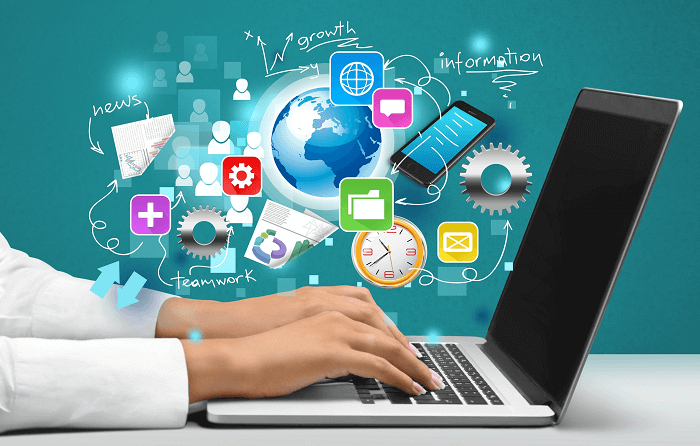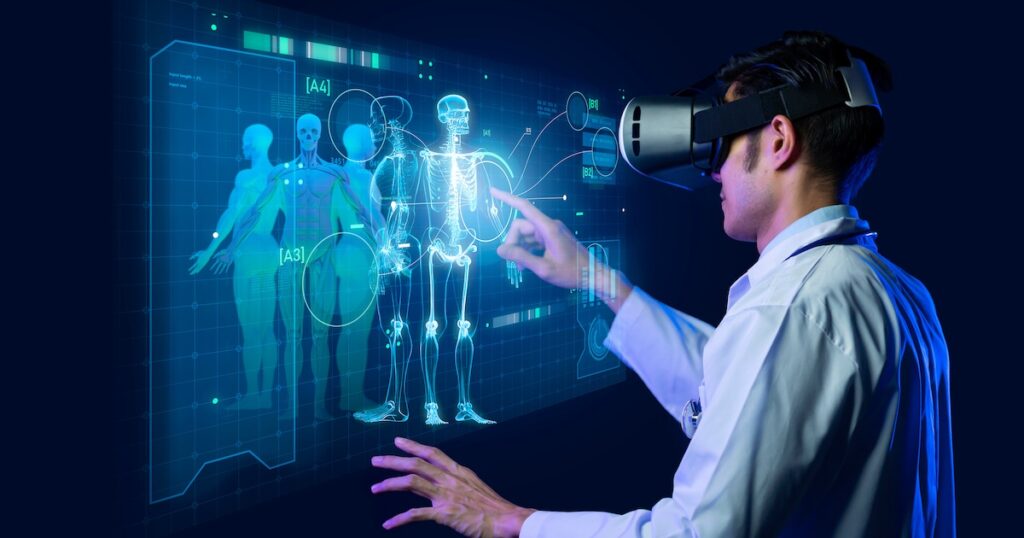
The rapid rise of technology over the years has completely changed the essence and essence of modern society. Medicine, education, entertainment as well as business and communication, have all become heavily influenced by technology. In this text, I will elaborate on the role that technology has in the ways in which society operates and how it can bolster growth and innovation in the future.
1. A Brief Overview Of Technology

Technology can be defined as the collection of processes and tools that stem from the scientific method, aimed at solving real-world problems. The wheel, the printing press, artificial intelligence (AI), blockchain – these are all new technologies. It manages every single aspect of the human race, and its primal function is to assist enhance human efficiency, productivity, and convenience in general.
2. Technological Effects On Communication

The greatest effect that changed the world forever due to technology is how people communicate with each other. Back then, even telegraphs and telephones were major breakthroughs, now exchanging ideas has evolved greatly to include emails, video calls, and instant chats. Business interactions can be done through social networks too, which gives people the ability to network and work together even from far apart.
Advantages:

Time efficiency: What used to take many days to convey, today can be delivered in seconds.
Great coverage:
Communication tools are easy to find and use so even outlying regions can remain connected.
Business Impact:
The use of technology streamlines worldwide business as it allows for swift communication with customers, suppliers, and other parties.
Challenges:
On the flip side, as business has advanced, there has been an overdependence on the use of digital tools which has resulted in the spread of false information, cyberbullying, and the reduction in social interactions.
3. Transforming Healthcare

Technology has changed the healthcare sector, making it more efficient in treatment, diagnosis, and providing services to patients. With the introduction of telemedicine, AI-powered health devices, and diagnostic tools the patients now have access to better services
Key Contributions:
Advanced Diagnostics:
The use of AI in algorithms trained with machine learning allows for the early detection of diseases and enhanced accuracy in diagnosis.
Telemedicine:
With the use of remote consultation, accessibility to health care services has increased, especially in rural parts of the world.
Medical Research:
Technology assists in quickening the process of drug discovery and researching intricate diseases, thereby enhancing the quality and quantity of life.
Ethical Concerns
Nevertheless, issues such as privacy of data, equity in the distribution of access to sophisticated technologies, and moral questions on genetic engineering still exist.
4. Education and Learning

Technology has changed how things are done in the education sector. Online classes, interactive boards, and e-learning programs have facilitated millions of people to gain knowledge by bringing education to people’s fingertips making it easier to access and use.
Advantages
Accessibility:
Education can be received from any part of the world no matter one’s location.
Customization:
Individual students are taught according to what they are comfortable with through the use of self-learning platforms.
Connection
Google Workspace for example enables students and teachers to work together on projects.
Obstacles:
Students cease to think critically and lack hands-on abilities when they overly depend on technology. In addition, equitable access to education is hampered by the existing digital gap.
5. Economic Development and Entrepreneurship
Businesses can grow because they can use technology to increase efficiency, cut costs, and access a global market.
Business Uses:
Automation: Robotics and AI replace human labor and perform tasks more quickly overall.
E-commerce:

Companies such as Amazon and Alibaba have transformed the retail industry by providing international exposure to businesses with their services.
Data Analytics:
Companies are aided in their decision-making by big data analysis that examines customer activity patterns as well as market indicators.
Pitfalls:
Job loss and greater income gaps may result from automation and technology advances.
6. Care for the Environment
Technology has both good and bad implications for the environment. It is both a means of giving solutions for conservation and sustainable development and a means of harming the environment when used badly.
Benefits:
Renewable Energy:
New Wind, solar, and hydropower technologies will help reduce the use of oil and gas.
Smart Farming:
Technology increases food production while reducing the investment in natural resources to do so.
Waste Management:
Recycling technology advances will result in reduced waste and provide products for which a market exists.
Difficulties:
Cybernetic Wastes. The Rate at which devices become technologically outdated presents technical concerns.
Resource Exploitation:
Mining for rare earth metals used in technology may also disrupt the ecological balance.
7. The Improvement of Recreation and Free Time Activities.
Thanks to such technologies as VR & AR, as well as full HD Streaming the entertainment industry is rejuvenated and taken to a new level.
Pros:
Availability:
In this case, Netflix, Spotify, and YouTube as examples of applications providing content on demand
.
Interactivity:
On the other hand, VR and AR allow watching entertaining content in a more interactive and involved way.
International Audience:
As a result, it is now possible for these artists and creators of any form to promote their work internationally.
Cons:
Sharply designed 24-hour entertainment systems engross the audience in a manner that deteriorates their output and even negatively impacts their emotional health.
8. Investment Fosterage.
The performance capabilities of Technologies foster its development in all industries and build a vibrant future.
Important Areas of Change:
Artificial Intelligence:
AI is profoundly transforming every domain of human society from medicine to transport.
Space Travel:
The dream advanced beyond boundaries with the help of technology to reach us.
Biotechnology:
Research in genetics and bioengineering holds great potential for disease treatment or even improving agricultural productivity.
Dangers:
The speed of technological growth may outrun the speed at which laws are established leading to the regulatory issues concerning the social framework may arise.
9. Problems and ethics are one other facet of the dilemma.
Technology is beneficial without a doubt, however, like all things, it has its challenges that should be tackled responsibly.
Main Issues:
Limited access to technology aggravates social and economic inequality.
Invasion of Privacy:
Sale and infringement of data ownership creates privacy problems.
Cyber Risks:

With the increased use of technology in everyday life comes a greater threat of cyberattacks.
Moral Facets:
The application and progress of gadgets should be directed by moral principles to ensure that society benefits as a unit. Matters such as AI discrimination, monitoring, and the effects of technology on the ecosystem are issues that require control and supervision.
The Way Forward 10.
The future of technology presents numerous opportunities. Revolutionary technologies like computing with quantum bits, the use of nanotechnology, and cutting-edge robotics stand to alter the world in groundbreaking ways.
Major Developments Responding to Global Environmental Challenges Turning Into Sustainable Technology: Simple Environmental Solutions.
Eco-Friendly Cities:
Use of IoT and AI in redeveloping smarter, cleaner cities.
Human-Driven Products:
Technology that acts and functions for the human’s benefit.
Conclusion
In the modern era, technology is considered the most powerful entity that has influenced and changed every aspect of human existence, offering innumerable opportunities for betterment, advancement, and enhancement in different fields. However, there are some issues such as disparity, environmental issues, and even ethics that need to be resolved which the technology can solve. Going forward, it will be paramount to adopt a balanced stance on the advancement of technology to minimize adverse repercussions while maximizing access for everyone.
